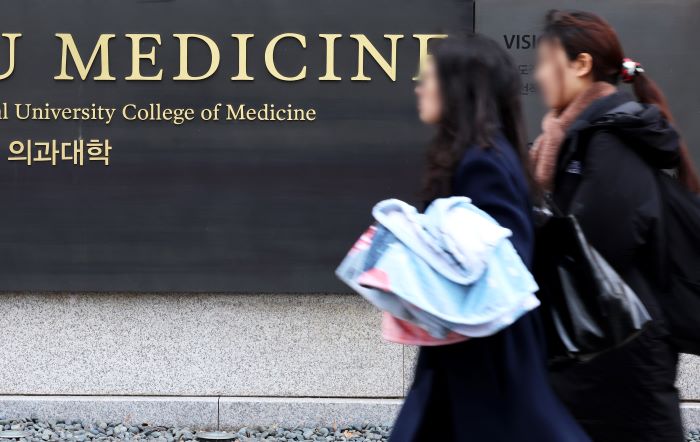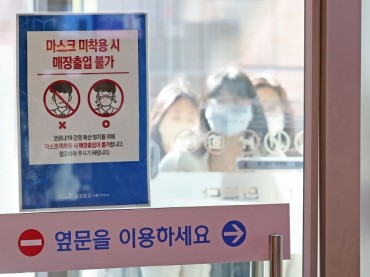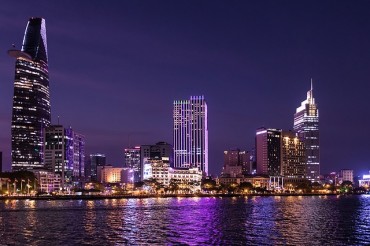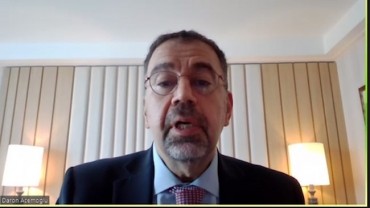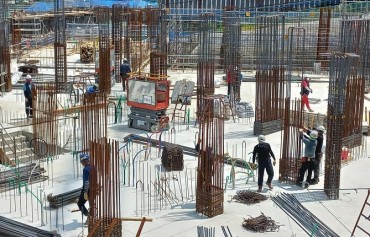SEOUL, Feb. 6 (Korea Bizwire) – The government’s first medical school enrollment quota increase in decades came out of a dire necessity to secure more doctors for ensuring basic medical services amid rapid aging and growing regional disparities, though South Korea has a long way to go before achieving the goals facing fierce opposition from doctors and other hurdles, experts said Tuesday.
Earlier in the day, the health ministry announced a decision to raise the number of new medical students by 2,000, or 65.4 percent, for next year in an effort to address the chronic shortage of doctors in rural areas and essential healthcare fields.
The government last raised the medical school enrollment quota in 1997 to over around 3,500, and the figure had then been on a constant decrease to 3,058 in 2006 before remaining unchanged.
“In order to protect the people’s health and lives, expanding the workforce of doctors is a task of the times that cannot be delayed any longer,” President Yoon Suk Yeol said.
The move came as the chronic shortage of doctors, particularly in such essential medical fields as emergency treatments and pediatrics, as well as in non-metropolitan and remote areas, has caused public inconvenience and threatened the health of the people.
According to the health ministry, an additional 15,000 doctors will be needed by 2035 to meet growing demand from a rapidly aging population and other factors.
The number of doctors per 1,000 people in South Korea came to 2.6, far below the average of the Organization for Economic Cooperation and Development (OECD) member nations of 3.7, according to government data.
A doctor was in charge of 6,133 patients in the country in 2021, compared with the OECD average of 1,788, the data showed.
The current quota also came to around one third of that of major nations.
Britain, whose population size is similar to that of South Korea, set its medical school quota at 8,639 in 2020.
Germany and Japan had 9,458 and 9,330 medical school students, respectively, and they are working to raise the number further.
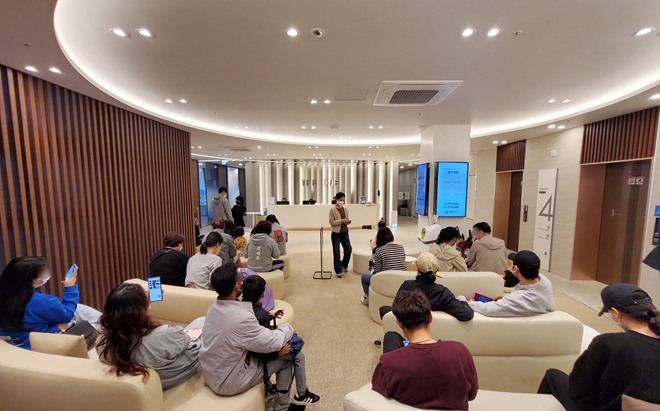
This file photo, taken May 7, 2023, shows parents and their children waiting to see a doctor at a clinic in Daegu, 237 kilometers south of Seoul. (Yonhap)
Particularly worrisome is that the country has seen a marked fall in the number of doctors serving such essential fields as surgery, obstetrics and gynecology, and pediatrics departments, while more have opted for dermatology, ophthalmology, plastic surgery and other “lucrative” and “less grueling” divisions.
Hospitals in non-metropolitan and remote areas have long experienced difficulties in finding doctors, and many patients have been forced to travel long distances to see a doctor.
A survey by the Korea Health and Medical Workers’ Union in December showed that 89.3 percent of the respondents approved of the medical school enrollment quota.
“The government has taken cases caused by the shortage of doctors seriously, such as long lines to see pediatric doctors and patients scrambling to find emergency rooms,” Health Minister Cho Kyoo-hong has said.
“If the current trend continues, we will not be able to appropriately manage growing demand for medical services in the super-aged society and in the case of new infections diseases. The situation in rural areas will worsen further,” Cho warned.
South Korea has experienced rapid aging and it is expected to become a super-aged society in 2025, where the proportion of those aged 65 and older hits 20 percent of the population, amid a constant fall in the ultra-low birthrate.
Doctors have strongly opposed the plan to increase the quota and vowed to stage a nationwide strike.
The Korean Medical Association (KMA) held an emergency press conference Tuesday and threatened to take collective action against the government’s “unilateral” decision, claiming that the quota hike will compromise the quality of medical education and services and that the government should find other ways to better allocate physicians and boost compensation.
The government has vowed to issue an executive order to immediately return to work in case of a strike and make stern responses against any illegal moves by doctors.
“We’ve had talks with the medical circle and experts and collected opinions from the public for more than a year. The ministry and the KMA had held 27 rounds of meetings and the government has accepted quite a lot of their demands,” a ministry official said.
Last week, the government announced a package of incentives for the medical community that will allocate 10 trillion won (US$7.5 billion) by 2028 to enhance compensation for medical staff providing services in vulnerable areas.
It also vowed to lay a legal foundation to limit doctors’ criminal liability in cases of malpractice.
Experts, however, said the government’s plan would not address the challenges in the medical system in the near future.
It will take around 10 years for a growing number of medical school students to begin their duties, so the current “vacuum” will remain for the time being.
How to secure a budget of over 10 trillion won by 2028 for the incentives is also yet to be devised.
More fundamentally, some have been skeptical about the effects of those reform measures in encouraging doctors to major in “unpopular” medical fields and to work in rural areas.
“The plan does not have details about how to allocate doctors to such vulnerable areas,” an official of the Citizens’ Coalition for Economic Justice, a Seoul-based civic group, said, calling for more legally binding and comprehensive measures.
Kim Yoon, professor of the medical school of Seoul National University, said, “It is imperative for the government to have the medical schools with a larger number of students take responsibility for beefing up services in vulnerable fields.”
(Yonhap)


